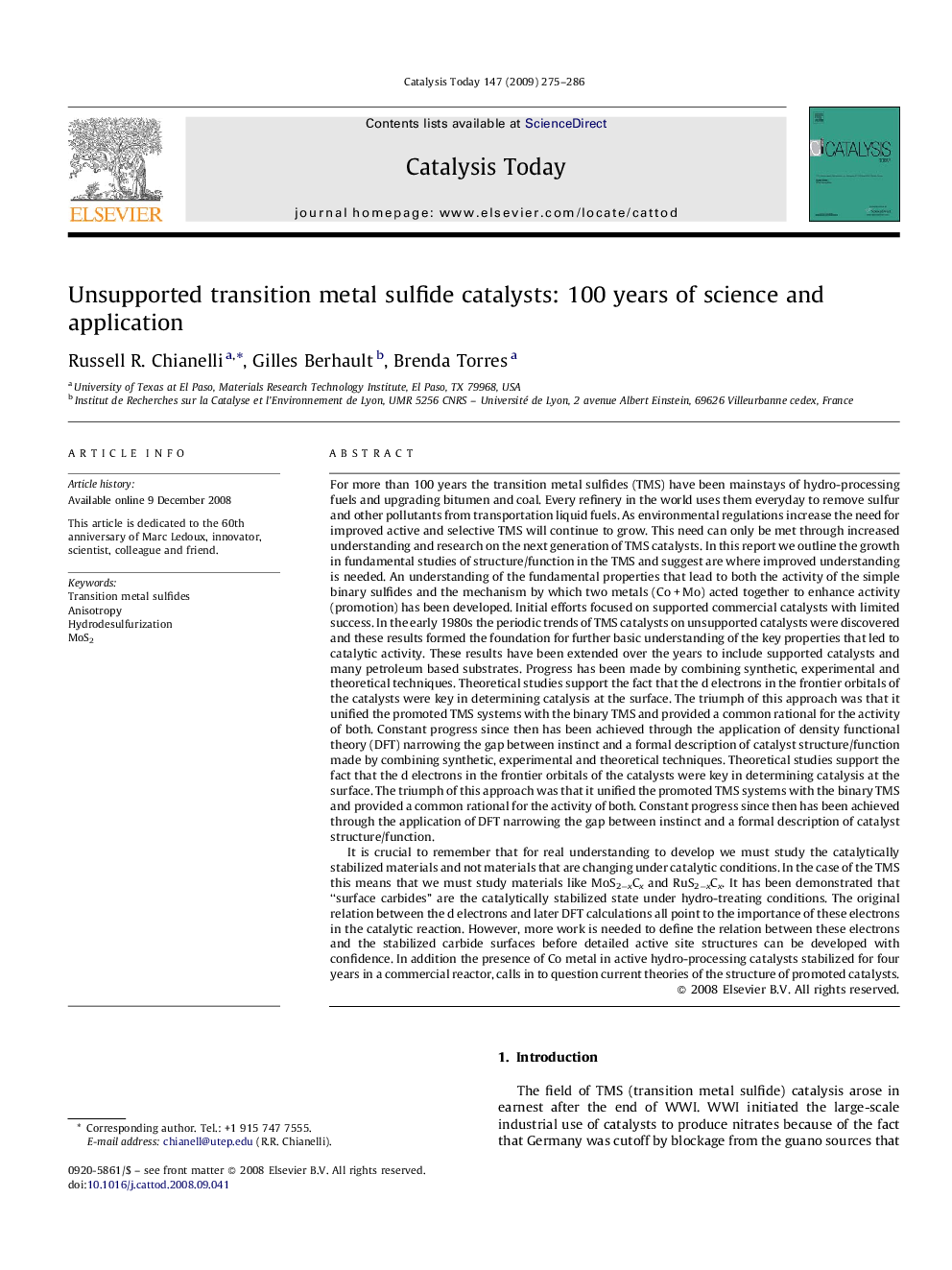| Article ID | Journal | Published Year | Pages | File Type |
|---|---|---|---|---|
| 56876 | Catalysis Today | 2009 | 12 Pages |
For more than 100 years the transition metal sulfides (TMS) have been mainstays of hydro-processing fuels and upgrading bitumen and coal. Every refinery in the world uses them everyday to remove sulfur and other pollutants from transportation liquid fuels. As environmental regulations increase the need for improved active and selective TMS will continue to grow. This need can only be met through increased understanding and research on the next generation of TMS catalysts. In this report we outline the growth in fundamental studies of structure/function in the TMS and suggest are where improved understanding is needed. An understanding of the fundamental properties that lead to both the activity of the simple binary sulfides and the mechanism by which two metals (Co + Mo) acted together to enhance activity (promotion) has been developed. Initial efforts focused on supported commercial catalysts with limited success. In the early 1980s the periodic trends of TMS catalysts on unsupported catalysts were discovered and these results formed the foundation for further basic understanding of the key properties that led to catalytic activity. These results have been extended over the years to include supported catalysts and many petroleum based substrates. Progress has been made by combining synthetic, experimental and theoretical techniques. Theoretical studies support the fact that the d electrons in the frontier orbitals of the catalysts were key in determining catalysis at the surface. The triumph of this approach was that it unified the promoted TMS systems with the binary TMS and provided a common rational for the activity of both. Constant progress since then has been achieved through the application of density functional theory (DFT) narrowing the gap between instinct and a formal description of catalyst structure/function made by combining synthetic, experimental and theoretical techniques. Theoretical studies support the fact that the d electrons in the frontier orbitals of the catalysts were key in determining catalysis at the surface. The triumph of this approach was that it unified the promoted TMS systems with the binary TMS and provided a common rational for the activity of both. Constant progress since then has been achieved through the application of DFT narrowing the gap between instinct and a formal description of catalyst structure/function.It is crucial to remember that for real understanding to develop we must study the catalytically stabilized materials and not materials that are changing under catalytic conditions. In the case of the TMS this means that we must study materials like MoS2−xCx and RuS2−xCx. It has been demonstrated that “surface carbides” are the catalytically stabilized state under hydro-treating conditions. The original relation between the d electrons and later DFT calculations all point to the importance of these electrons in the catalytic reaction. However, more work is needed to define the relation between these electrons and the stabilized carbide surfaces before detailed active site structures can be developed with confidence. In addition the presence of Co metal in active hydro-processing catalysts stabilized for four years in a commercial reactor, calls in to question current theories of the structure of promoted catalysts.
